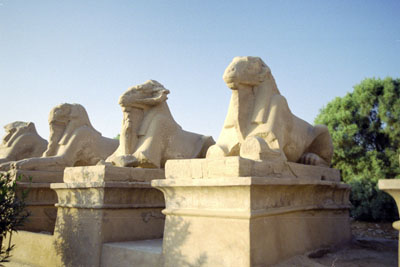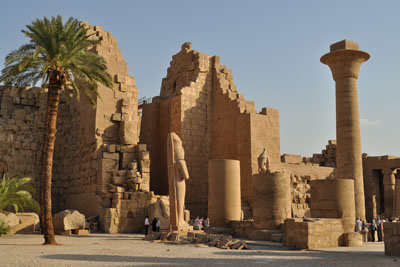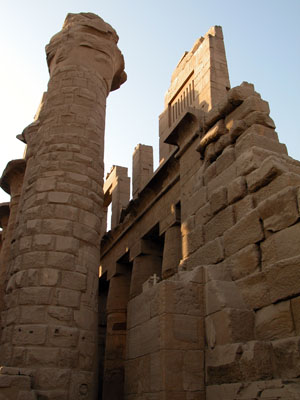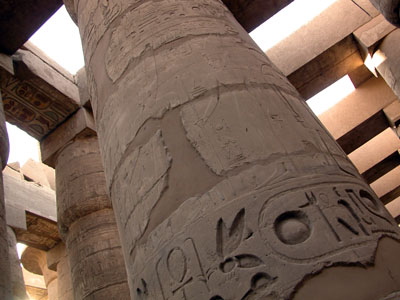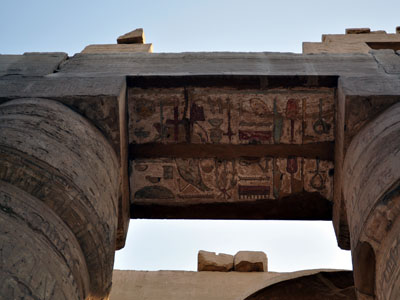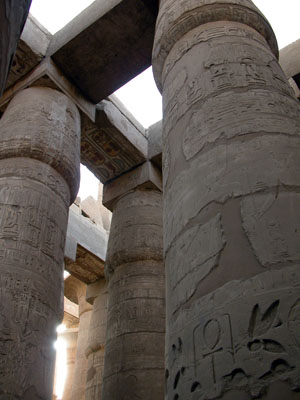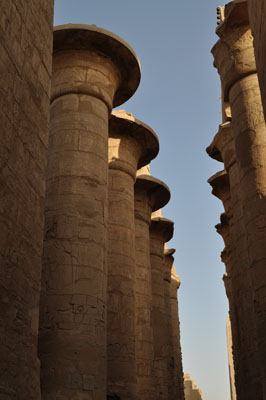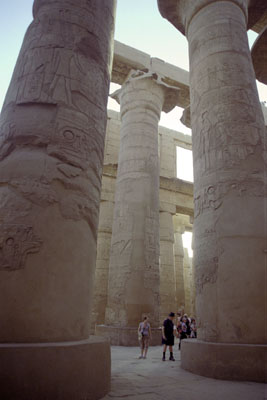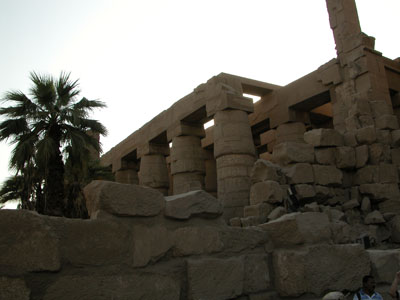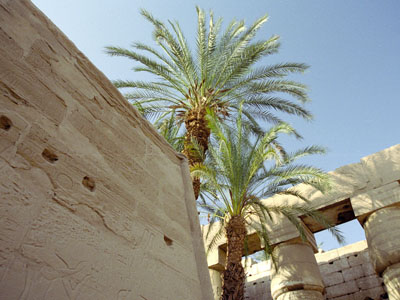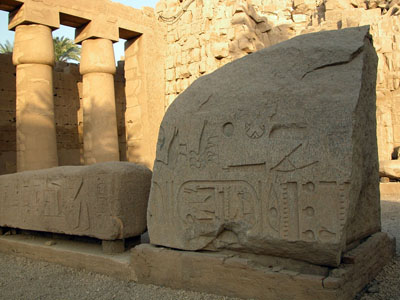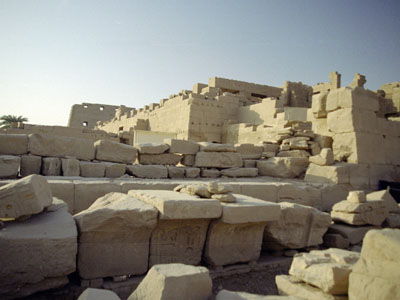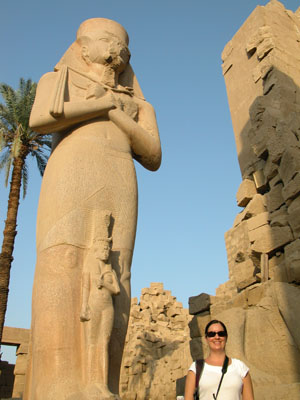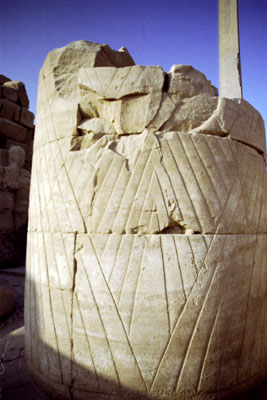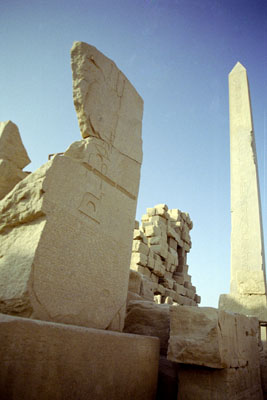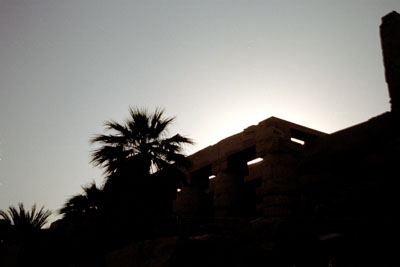The largest religious building ever built - The Temple Complex of Karnak is located in Luxor. Covering an area of 2 sq km, only a portion of this massive complex is actually open to the public. As with many ancient structures, Karnak was not built at once, but was the result of many constructions, reconstruction and additions over the centuries. Karnak was added to over an unusually long period of time. The oldest portion of the temple yet discovered dates back to the eleventh dynasty (approximately 2000 BC), but the temple reached its apogee during the eighteenth dynasty (around 1500 BC) when Luxor - then known as Thebes - became the capitol of a unified Egypt.
It is believed that no less than thirty pharaohs contributed to construction at Karnak, which lasted well into the Ptolmaic dynasty during the first century. Seti I, Ramses II and Queen Hatshepsut are some of the more well known pharaohs that left their mark on the complex. By the time the emperor Constantine ordered the closing of all pagan temples in 346 AD, Karnak was already largely abandoned. The remains of early Christian churches have also been found among the ruins.All photos on this page are originals by & copyrighted by Daren Willden, unless otherwise stated. All rights reserved.
